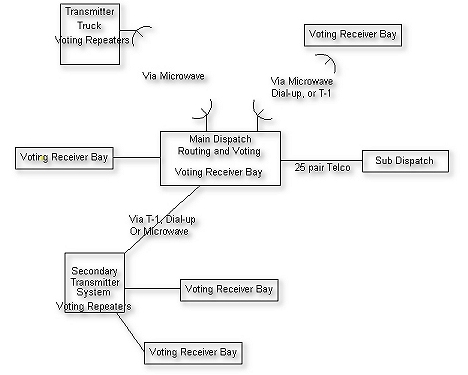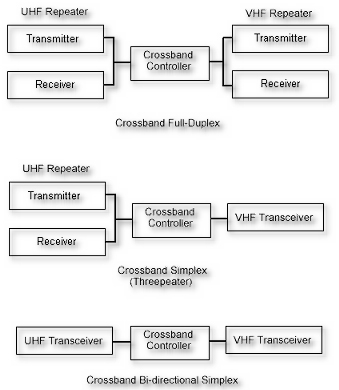Linked systems extend full system functionality to a location which is completely out of range of the primary system. An example of this would be an event which encompasses several towns or locations which are separated by mountain ranges or great distance.
It's not difficult to link repeaters together, but there are circumstances where the different sub-systems can "collide" with each other. The FCC also requires that any repeater be under the control of a control point which can "knock down" the repeater in the event of a technical glitch.
Cross-voted systems are controlled by a central point which can arbitrate which receiver or which sub-system has control of the transmission. The central point can defeat a remote repeater or repeaters, since the central point sends control signals to all the remote repeaters.


A simple example of this is an event we did where 20,000 people were expected at the event which was to take place in a small town. The town "borrowed" officers from many surrounding communities. The borrowed officers did not bring radios with them, and the home department did not have enough radios to equip all the officers.
We set up interoperability through a cross-band bidirectional repeater to connect a large number of our UHF radios to the VHF mutual aid frequency that was being used to coordinate the police contingent.
This not only gave the borrowed officers access to the required police frequency, but also gave them access to the event security staff for coordination of on-grounds and off-grounds (inside and outside) security. It also had the effect of "unloading" the local department's main channel which still had to handle normal everyday local police business.